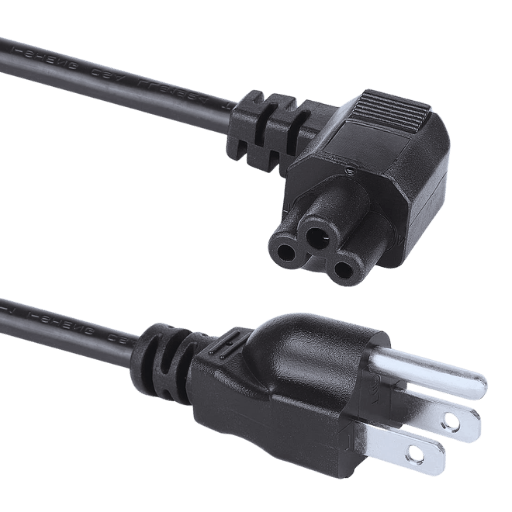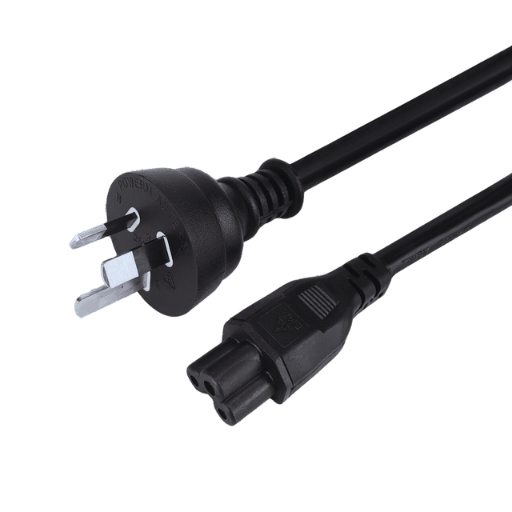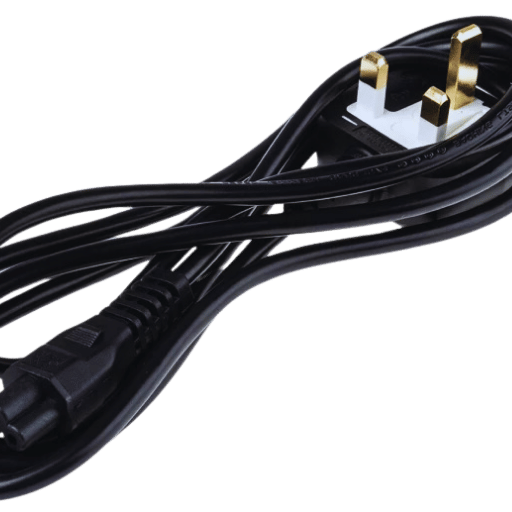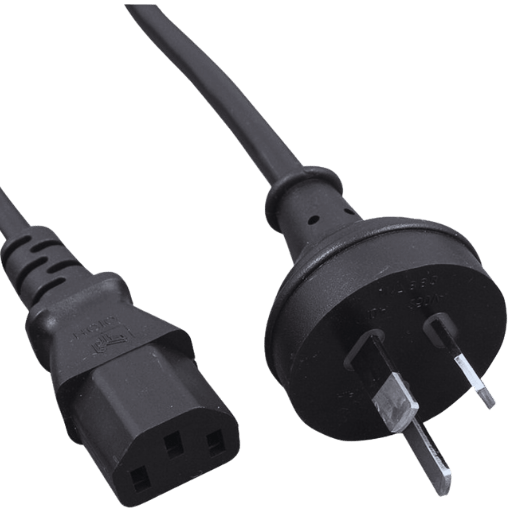Selecting the correct power cord in regard to safety and performance, as well as powering an electronic device, is of utmost importance. The IEC C5 power cord, called ‘cloverleaf’ or ‘Mickey Mouse’ because of its shape, is also readily used among other forms of power cords. The objective of this article is to explain the design and use of the IEC C5 power cord as well as the common areas of application. This is regardless of one’s position as a technician, IT expert, or an informed consumer with the ability to operate all dimers of IEC C5 power cord use at the workplace. Conducting a deepening technical and practical review will help fill in the understanding as to why IEC C5 power cords can be considered a safe option regardless of the electronic device.

IEC C5 power cord is an electronically related power supply cable that is most commonly employed in connecting electronic devices to a power supply. The connector has the shape of a clover leaf with a rounded three-claw connector compatible with an IEC C6 inlet. The IEC C5 connectors are designed for power cords that are which need polarization and typically used within a working voltage range of 250 volts. This is used on laptops, projectors, and a few other small appliances. This design provides a tight and firm connection that offers little chance of accidental disconnection.
The IEC C5 connector is easily identifiable with its cloverleaf outline and three rounded prongs. These three prongs form the live, neutral, and ground lines, which provide the necessary polarized power for many electronic appliances. The connector can be plugged into an IEC C6 inlet and is able to support voltages of around 250V. Apart from the above features, the construction design aims to achieve a firm and secure hold, thereby preventing accidental disconnection. This is commonly applied to laptops, projectors, and even kitchen devices.
The IEC C5 power cords are found to be used in many applications as they make proper connections to devices that are fitted with polarized supply connectors. It is used in laptops to ensure that portable computers do not run out of electricity. Projectors also use IEC C5-type cords so that they maintain a consistent operational link, which is necessary when making a presentation. In addition, small appliances, which are mostly used in audio-visual systems, mobile electronics, and certain kitchen devices, also use IEC C5 power cords that offer a stable and strong connection. Its design is appealing, making it fit in a wide range of electronics because of its strength.
The C5 power sockets, recognizable by their white “C5” cloverleaf shape, are used mostly on consumer electronics, including devices that require dependable and sturdy power sockets. The C5 power cords are found habitually on laptops, which need a C5 power supply during operation and for easy mobility. The projectors that are very useful for business presentations, as well as home entertainment, also use these cords very often in order to function properly. Other than these, however, the IEC C5 connector is usually used on small appliances like portable audio speakers, portable AVs, and kitchen gadgets like blenders and mixers, owing to the great design and compactness of the connector.

The power cord of the IEC C5 connector (popularly known as the “clover leaf” ) is a type of power connector that has distinguishing characteristics, unlike other power connectors. The unique external features of the IEC C5 connector are three rounded prongs applied in a triangle form shaped after the three-leafed shamrock. This placement is designed for tight providing a stable holding.
Electrical Specifications:
Build and Design:
That is of course, ideal since these features combine to make the IEC C5 an appropriate complement for different electronic devices, meeting their power requirements safely and efficiently.
It is important to notice how the IEC C5 connector compares with other power cord types in terms of their design, use, and efficiency.
Design and Structure:
The connectors of the IEC C5, which has rounded three cone shapes assembled like a triangle, is quite different from that of IEC C13 where the three cone prongs are in a straight rectangular form. The C5’s unique design shaped like a clover leaf is mainly used for electronic devices such as projectors and laptops whereas the C13 is used for desktop computers and bigger sized devices.
Application and Current Rating:
The current rating of the IEC C5 ranges within a limit of 2.5A to 10A, and such a rating is normally less than that of IEC C13, which goes to a current rating of 16A. This of course lowers the range within which the C5 will be applied, that is, it will be suited for less power consuming applications. In addition, the 250V AC voltage that the C5 can withstand also compares favorably with other IEC connectors, making it applicable in other regions.
Compatibility and Safety:
The connection point set on IEC C5 is made secure with tension/ retention keys so that there is a lowered risk of loosening. The same applies to IEC C13 and C14, which is used for higher power appliances. Both styles are likely to be UL, CE or other equivalents marked being able to be used in very sick situations.
Thus, however, the IEC C5 being a versatile cord is a lower power cord set designed for mobile devices whereas other formats like the IEC C13 are employed for more serious high power applications. Each type of connector has its specific function that prevents an interception while delivering electricity to the appropriate electronic devices in the most efficient way possible.
Various power cords, including the IEC C5, are labeled and coded for the purpose of identification as well as conformity to the global standards. Commonly, such labels will contain details such as the voltage and current rating, manufacturer, and rating safety markings (UL, CE, etc.). Also, these cords often bear some code that indicates that the cords are conforming to the IEC 60320 standard, which lays down the shape, size, and other basic requirements of appliance couplers for domestic appliances and appliances of this category.
An example of the labeling on an IEC C5 cord is, CORD TYPE 250V ~ 10A 2.5mm² H03VV-F which means that:
Such and many more complex labeling contributes towards easy interfacing of the cords and the appropriate inlets ensuring that international standards in terms of safety and performance are upheld.

IEC C5 power cords have been made useful because they also support different types of plugs used in different socially defined areas. The cords themselves also comply with the IEC 60320 standard, which is internationally accepted. Hence, they can be used with country-related plug converters. This is very important, especially for users who are frequent travelers or require the use of electronics in different places. Through the use of plug adaptors, an IEC C5 power cord can safely and effectively interact with power sockets in various countries while complying with the country’s electrical standards and still providing the required power supply.
Even though IEC C5 power cords are commonly used in countries around the world, the requirements for them are applicable only to those which seem at least more or less suitable for giving safe and permissive, as some would state: reliable power transmission, as well cut cords. Head one is the IEC 60320 specification, which governs performance power connection assemblies, couplers, and several other related types of systems. This standard defines levels of performance in terms of electrical properties, temperature range limitations, and mechanical robustness in order to mitigate risks of electric or fire accidents. For that, it is worth stressing that, for instance, C5 power cords obtain other regional certifications such as UL in the USA, CSA in Canada, and CE in the European Union. All these certifications involve the amount of rope testing and justification that the cords will handle certain voltage and current levels, which at least makes the customers sleep knowing the cords are safe and effective.

The choice of IEC C5 power cord is affected by both the length and gauge of the cord. The length must always fit the distance between the device and the power outlet, with no extra cable to create a tripping hazard and no signal loss being caused by idle wires. With respect to the gauge, the woman, which was measured in American Wire Gauge, indicates looking at wire that has a lower number. In most instances, an 18 AWG chord suffices for general devices, but if the equipment requires more power, a 16 AWG or 14 AWG chord can be employed to facilitate power transfer efficiently.
Taking into consideration voltage and current ratings, the IEC C5 power cord has a voltage rating and current rating. The voltage rating refers to the highest level of voltage that the cord can tolerate with safe limits without being damaged or breaking down, while the current rating, on the other hand, refers to the highest possible current the cord can carry without the risk of overheating. In general, the voltage rating in the case of IEC C5 power cords is either 125V or 250V, and some of the current ratings may include 10A and 15A. Thus, it is vital to ensure that the cord’s ratings do not compromise the device’s specifications to avert the occurrence of any electrical risks. These practices also enhance safety, which is why they are important. Such practices have been structured logically by using an up-to-date cord.
When shopping for IEC C5 power cords, certification marks, and quality marks must be ensured. Various certification marks can be found in the USA (UL – Underwriters Laboratories), Canada (CSA – Canadian Standards Association), and Europe (VDE – Verband der Elektrotechnik). These marks stamp that the product has been subjected to and passed a number of tests. Also, verify that the power cord is compliant with RoHS, which further proves the product is safe for the environment as it does not contain hazardous substances. If these certifications and quality marks are confirmed, one will be sure that the power cord is guaranteed safety while using any electronic device.

Several IEC C5 power cord online shops guarantee you a professional and quality product.
These retailers are known for their good product range, competitive market prices, and quality assurance.
Many brick-and-mortar shops offer IEC C5 power cords and are very helpful with the purchase and usage:
There stores are notorious for having dependable inventory and efficient managerial clientele assistance, clients both on and off the telephone are impressed with the availability of such services and availing wire cords.
Acquiring IEC C5 power cords from the manufacturer has its own benefits and shortcomings.
Pros:
Cons:
Weighing these advantages and disadvantages will make sure that you are more informed on where to buy IEC C5 power cords.

Changing your IEC C5 power cord is needed for safety and proper functioning. Note that it is advisable to change the cord if:
A: Pine Power Iv Plug—also called a ‘cloverleaf’—is an AC power cord that connects electronic accessories like laptop adapter power supply units to the mains socket. It has a C5 plug at one end and a NEMA 5-15P plug at the other end to be used with a North America Electric Wall Socket. These power cords or cables can be safely attached to devices with low—medium power input ratings.
A: IEC C5 power cords are known to have certain specifications, including a voltage rating 125V (for US/Canada use) – Current rating of 10A – Wire gauge of 18AWG – And length: Generally available as 3ft, 6ft, or other more readily in the market – Connector types: IEC 60320 C5 at the device end and NEMA 5-15P mains plug end – Certification: UL listed or similar certification.
A: The IEC C5 power cords are mostly found on most laptop power adapters, but the absence of laptops with this OLDC lSO1737 connector is very common. Therefore, looking at the laptop’s power input details or the existing power cable is necessary. Others may prefer using the figure-8 or C7 connectors or the C10 connectors, which are meant for computer power direct cables. A timely replacement of the damaged power cord with the correct type is necessary to avoid frustrations while using the device.
A: Yes, there are various styles of IEC C5 power cords available: Straight vs. angled plugs, Different lengths (e.g., 1ft, 3ft, 6ft), low-profile designs for tight spaces, Cords with country-specific plugs (e.g., US plug, UK plug), Heavy-Duty or reinforced cords for baja use. Selecting the style that best suits your requirements and usage environment is pertinent.
A: In regards to IEC C5 power cords, there are several things you can do to make sure you’re buying the right one: Look for a UL listing or other recognized safety approvals – Minimum wire gauge (18AWG is standard for most applications) – Well molded plugs – Some brands like Monoprice power cord – Good insulation (e.g., SVT or SPT-2 type) – Proper specification information (e.g., voltage, amperage, etc) Quality cords contributes to proper and secure powering-up of your devices.
A: Yes, an IEC C5 power cord can be plugged into a power strip or extension cord, as long as The power strip or extension cord is rated for a minimum of 10A 125V – You do not create a circuit overload by using too many devices – The total power does not exceed the power rating of the weakest link in the chain When connecting several cords or power strips, take care of safety first and see to it that all usage instructions for the electrical appliance are observed and implemented in the right way.
A: To maintain and store the IEC C5 power cord, Do not sharply kink it or coil it around any objects too tightly. It should be kept in a dry, cool place and out of direct sunlight. Inspect regularly for any damage or wear and tear. Remove dust from the cord. Hold onto the plug when eliminating cords, and do not apply force on the cord. Proper care will also help mitigate any risks associated with power cord usage.